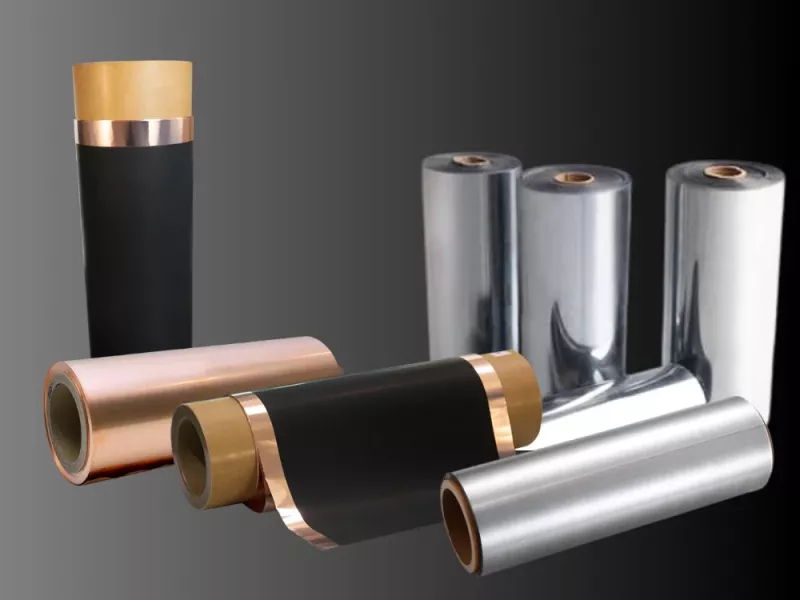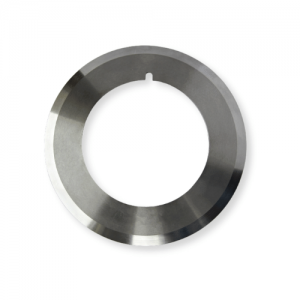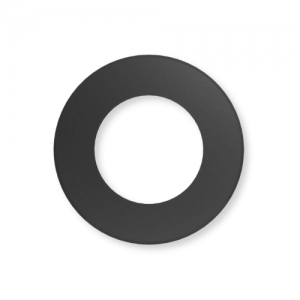Best Cutting Techniques for Aluminium & Copper Metallic Foil
Use a correctly designed machine knife for cutting aluminium and copper foils
Everyone loves sharp knives and blades. But sometimes you can have a too sharp cutting edge. This article is for the converting industry and is about industrial cases where a less sharp blade is desired. Basically slitting and cutting materials such as aluminium and copper foils that require a high grinding angle for slitting and cutting.
Content:
- Definition of slitting and cutting
- How to avoid chips, swarfs, burrs, dust powder or delamination when cutting or slitting aluminium or copper metal foils
- Types of foils cut with a slitter: metal foil processing
- What material preferences to consider when slitting & cutting aluminum and copper foils?
- The bodyguard scarf cut, sharpness, and durability in general
- Slitting aluminium metallic foil with industrial razor blades does not work
- Slitting aluminium metallic foil with a sharp circular dished top knife does not work
- Slitting aluminium metallic foil with a less sharp circular dished top knife works well
- Cutting copper foil
- Cutting coated copper
- Cutting laminated metallic foil
Definition of Slitting and Cutting
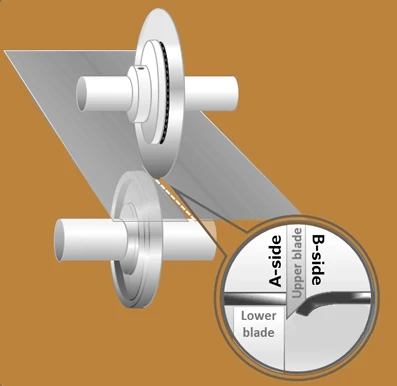 Slitting is when a machine knife or blade is slitting a material in a production web direction. For slitting you can use razor blades or shear knives. Shear knives or rotary or roll slitting is using a top dish circular knife and a bottom / female circular knife. Cutting is the opposite. Cutting is when you cut a material across the web direction. You can use razor blades for cutting or like scissors you can use a top and bottom knife to cut a material across its length.
Slitting is when a machine knife or blade is slitting a material in a production web direction. For slitting you can use razor blades or shear knives. Shear knives or rotary or roll slitting is using a top dish circular knife and a bottom / female circular knife. Cutting is the opposite. Cutting is when you cut a material across the web direction. You can use razor blades for cutting or like scissors you can use a top and bottom knife to cut a material across its length.
How to Avoid Chips, Swarfs, Burrs, Dust Powder or Delamination When Cutting or Slitting Aluminium or Copper Metal Foils
Products such as metal foil, resin, and paper, are usually slit into a fixed width and rolled up. Metallic foil is used for a wide array of purposes, but if it is not properly slit or cut chips, burrs, dust, cutting powder or delamination of the foil may ruin it purpose. It is clear that setting and optimizing slit blades largely depends on operators' experiences. Often the finished product quality is greatly affected by the skill level of the operator. This text is about how to slit and cut metallic foil. We are specifically investigating how to slit and cut metallic foils in aluminium and copper. Read more in blog post 5 Ways to Improve Your Slitting and Cutting.
Types of Foils Cut with a Slitter: Metal Foil Processing
Thin metal foils come in various surface treatments and delivery forms. Virtually all metals can be processed using a slitter, with common choices including copper, copper alloys, nickel, nickel silver, fine silver, and various resistance alloys.
 A slitter-rewinder is used to wind and cut rolls of paper, nonwovens, film, adhesive tape, metal foil, and sheets. It employs knives to cut in the direction of the material feed, winding the cut pieces into individual rolls. Top and bottom slitter knives perform the cutting by passing the material between them. Quality is enhanced by selecting different knife angles and materials based on the material's characteristics.
A slitter-rewinder is used to wind and cut rolls of paper, nonwovens, film, adhesive tape, metal foil, and sheets. It employs knives to cut in the direction of the material feed, winding the cut pieces into individual rolls. Top and bottom slitter knives perform the cutting by passing the material between them. Quality is enhanced by selecting different knife angles and materials based on the material's characteristics.
What Material Preferences to Consider When Slitting & Cutting Aluminum and Copper Foils?
Copper foil is a soft metal. It is crucial to minimize cutting powder generation. Copper, being highly ductile, tends to stretch near the cutting surface during slitting. The more stretching and deformation occur, the more likely burrs and chips will be produced.
Similarly, when slitting or cutting aluminum foil, challenges arise due to aluminum's low hardness and deformability. Aluminum and its alloys find widespread use in various industries thanks to their excellent thermal conductivity, electrical conductivity, ductility, and low density. However, the microstructure of aluminum foil makes it tricky to cut efficiently, primarily because of its low hardness and deformability.
The Bodyguard Scarf Cut, Sharpness, and Durability in General
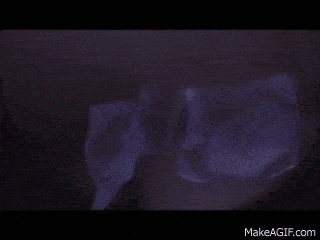 Kevin Costner’s katana, in the classic motion picture The Bodyguard from 1992, cuts objects as the blade is pulled across a material. If an object is simply dropped on the blade like the scarf in the movie, it is unlikely that any cutting will occur. As long as there’s no sliding action, the blade rarely cuts. If a scarf is allowed to slide across the edge, the material could be cut. Still, this classic motion picture amplifies the myth of a really sharp blade being cool to have. In practice such a low grinding angle and extremely sharp blade would be worn out very quickly and not be so practical for Japanese warriors.
Kevin Costner’s katana, in the classic motion picture The Bodyguard from 1992, cuts objects as the blade is pulled across a material. If an object is simply dropped on the blade like the scarf in the movie, it is unlikely that any cutting will occur. As long as there’s no sliding action, the blade rarely cuts. If a scarf is allowed to slide across the edge, the material could be cut. Still, this classic motion picture amplifies the myth of a really sharp blade being cool to have. In practice such a low grinding angle and extremely sharp blade would be worn out very quickly and not be so practical for Japanese warriors.
A cutting edge can be grinded on one or two sides. A low grinding angle and a single bevel give a very sharp blade. A higher grinding angle and double bevel mean less sharpness but increased durability. A really sharp cutting edge is only optimal for a short time period and materials that need very clean cuts. Then the intention is to replace them. Consider a surgeon using his scalpel or an extra sharp snap-off blade cutting fine paper. However, all blades wear down and sharp cutting edges wear down faster. When sharp blades cut material, clips from the edge loosen. Depending on how abrasive the material is the more clips are lost. These clips damage the cutting edge, resulting in increasingly unclean cuts. Overall, it is time to replace them. For industrial usage, a combination of sharpness and durability is essential. In our minds, a blade must be sharp enough to do the cutting or slitting but durable enough to last as long as possible.
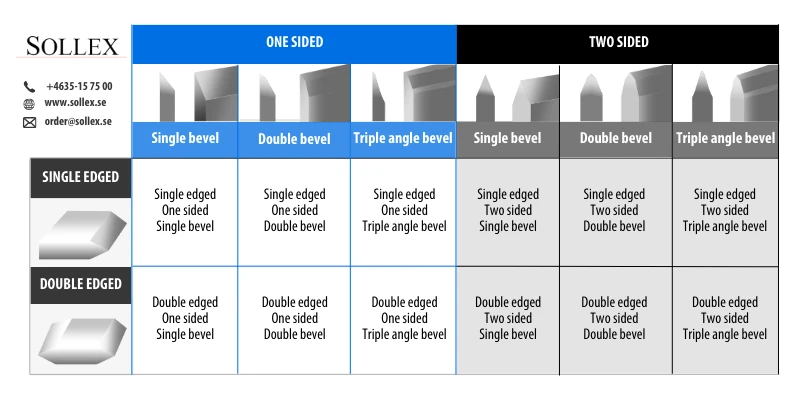
Slitting Aluminium Metallic Foil with Industrial Razor Blades Does Not Work
Sollex general recommendation is that when slitting film razor blades give the cleanest slit and cut. However, when cutting metallic foil with aluminium we found that our dear industrial razor blades did not work. Cutting thin aluminium foil with slitting razor blades resulted in uneven edges and a rough cutting surface.
Industrial razor blades are too sharp for cutting the thin aluminium foil. Slitting razor blades perform well when a film is stretched but still flexible and the pressure from the blade makes the material slide in two directions. The difference with cutting aluminium foil is that there is no constant pressure as the material deforms and stretches. As a result, the razor blade makes very many small cuts and there is no continued slitting.
Please note that if the metallic had been laminated with a film keeping it in place, razor blades would work with the cleanest cut.
Slitting Aluminium Metallic Foil with a Sharp Circular Dished Top Knife Does Not Work
A good way to slit or cut metallic aluminium foil is to use top and bottom machine knives. The bottom knife fixes the material and the top disc knife cuts it. Again, a too sharp top slitting knife generates flakes and burrs and destroys the slit as metallic foil deforms and stretches.
Slitting the aluminium foil with a 30-degree top knife is way too sharp. This low grinding angle was too sharp and resulted in a slit as this picture shows. Similar to the razor blades, the sharp-top knife slits the films in several different directions. The film is too fragile and unstable, which makes it go into bits and pieces. Creating small cut flakes that stick to the knife and destroy the slitting process.

Slitting Aluminium Metallic Foil with a Less Sharp Circular Dished Top Knife Works Well
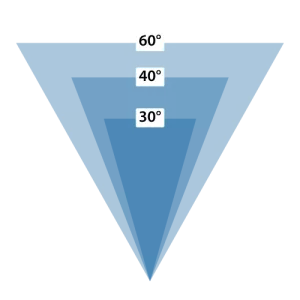 Solving the problem with slitting aluminium and other soft material foils is a less sharp top knife. A 60 degree top knife works fine for aluminium and copper foil. So in the end the aluminium foil needed to be fixed by the bottom knife and slit with the 60 degree top knife.
Solving the problem with slitting aluminium and other soft material foils is a less sharp top knife. A 60 degree top knife works fine for aluminium and copper foil. So in the end the aluminium foil needed to be fixed by the bottom knife and slit with the 60 degree top knife.
Cutting Copper Foil
Copper must be one of the most challenging materials to slit or cut. In itself, the copper is a very soft foil. It means that it deforms, stretches, and moves if it is not fixed enough. Similar to slitting aluminium, copper bends and tweaks. A too-sharp blade may cut partial cuts or create tearing as the copper foil approaches the knife. In Gemba we have found that cutting copper foil also requires a less sharp knife.
Cutting Coated Copper
Cutting coated metallic foil, such as carbon-coated battery copper foil, presents an even tougher challenge. It is our finding that the soft metallic foil is smooth and slippery, while the carbon coating is hard and easily cracks or generates clips or burrs. To cut such a battery-grade copper foil, you need two almost 90-degree flat knives to keep the film in position. Think more like punching than sharp blades for cutting. We have seen that a too-sharp second knife has problems cutting the film and the applied coating ends up in flakes, burrs, etc. But a well-designed, almost 90-degree vertical knife does the job beautifully.
Cutting Laminated Metallic Foil
Similar to coated metallic foil, cutting laminated foil presents its own set of challenges. Depending on the layer structure and the type of layers, we have found that there are two different approaches to laminated foils. Firstly, if any layer is supportive enough, fixing the material foil will allow you to proceed more like cutting a film with a sharp knife. But if the laminated layers are ”all metallic” you need to cut the laminated metallic foil just like the coated. More punching than normal slitting. Use two almost 90-degree knives.
FAQ
Q: What is the difference between slitting and cutting metal foil?
A: Slitting is performed in the machine direction using rotary or shear knives, while cutting is done across the web direction, either with straight blades or opposing top and bottom knives.
Q: Why do aluminium and copper foils create burrs and dust during slitting?
A: Aluminium and copper are soft and highly ductile materials. If the blade is too sharp, the foil deforms and stretches instead of being cleanly separated, which leads to burrs, flakes, dust, or delamination.
Q: Are razor blades suitable for slitting aluminium foil?
A: No. Industrial razor blades are too sharp for bare aluminium foil and typically cause uneven edges, tearing, and dust formation.
Q: Can razor blades be used if aluminium foil is laminated?
A: Yes. If the metallic foil is laminated with a supporting film that stabilizes the material, razor blades can produce clean cuts.
Q: Why does a very sharp circular top knife fail when slitting aluminium foil?
A: A low grinding angle top knife cuts in multiple directions as the foil deforms, creating flakes and burrs instead of a continuous, controlled slit.
Q: What knife angle works best for slitting aluminium and copper foil?
A: A less sharp circular top knife with a higher grinding angle, typically around 60 degrees, provides stable cutting and significantly reduces burr formation.
Q: Why is copper foil difficult to slit or cut?
A: Copper foil is extremely soft and stretches easily. If it is not firmly fixed by the bottom knife, the foil deforms before cutting, leading to tearing or partial cuts.
Q: Does cutting coated copper foil require a different approach?
A: Yes. Coated copper foil, such as battery-grade copper with carbon coating, requires almost vertical, high-angle knives to prevent coating flaking and burr formation.
Q: Why are near 90-degree knives recommended for coated metallic foils?
A: High-angle, almost vertical knives stabilize the foil and coating during cutting, working more like a controlled punching process than traditional slitting.
Q: How should laminated metallic foils be cut?
A: Laminated metallic foils may be cut either with sharper knives if one layer provides support, or with near 90-degree opposing knives if all layers are metallic.
Q: Is sharper always better when cutting metal foil?
A: No. In metal foil slitting, excessive sharpness reduces cut quality and blade life. A balance between durability and controlled sharpness produces the best results.

